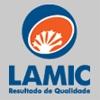Explore all the information on
Mycotoxins - Adsorbents, binders, tests
Welcome to the page about Mycotoxins - Adsorbents, binders, tests of Engormix; a source of knowledge on Mycotoxins - Adsorbents, binders, tests.
Introduction Mycotoxins are a chemically broad group of compounds characterized by low molecular weight. They are usually produced by moulds, especially species Aspergillus, Penicillium, Alternaria and Fusarium. Generally, there are many species, although only a few are monitored [1]. These species pose a health risk to both humans and livestock, and their occurrence causes considerable economic damage every year. The most involved are aflatoxins (AFB1), fumonisins, ochratoxins,...
Comments : 0
Recommendations: 0
1. Introduction Mycotoxins are toxic secondary metabolites produced by fungi. These compounds represent a threat to food security as they recurrently contaminate human food and animal feed, especially when those products have been produced from fungal-infected agricultural commodities, such as fruits, grains and vegetables [1]. The main foodborne mycotoxins of public health concern are aflatoxins, fumonisins, ochrartoxins, zearalenone, tricothecenes, deoxynivalenol and patulin...
Comments : 0
Recommendations: 0
.jpg&w=3840&q=75)

Afla V ONE 5 - 300 ppb Method for Total Aflatoxin Detection in Complete Feeds and Pet Food
Suggested link
1. Introduction Aflatoxins are highly toxic and carcinogenic compounds produced by Aspergillus flavus and closely related fungi in several crops [1]. Maize (Zea mays L.) and groundnut (Arachis hypogea L.) are amongst the most susceptible crops. Crop contamination with these potent compounds negatively affects both human and animal health, the income of farmers, and trade opportunities [2–4]. In the case of animals, when feeds are prepared with aflatoxin-contaminated crops,...
Comments : 0
Recommendations: 0
1. Introduction Mycotoxins are toxic chemically diverse secondary metabolites produced by filamentous fungi. Their structural diversity can give rise to several adverse effects in humans and animals, such as carcinogenicity, immunosuppression, teratogenicity, nephrotoxicity, and hepatotoxicity [1]. The contamination of food and feed supply with low levels of mycotoxins is widespread, and includes commodities such as wine, apple juice, cereals, milk, coffee beans, maize, nuts,...
Comments : 0
Recommendations: 0


An impact of Deoxynivalenol produced by Fusarium graminearum on broiler chickens
Suggested link
INTRODUCTION Previous studies (Widmer e al., 2008; Kim et al., 2009; Jacela et al., 2010) have measured metabolizable energy (ME) and standardized ileal digestible (SID) amino acid (AA) content in high-protein distillers dried grains (HP-DDG) produced using the old front-end fractionation processes, and these data were used in developing nutrient composition tables in NRC (2012). These nutritional composition values appeared to be accurate for previous HP-DDG sources because...
Comments : 0
Recommendations: 0
Can anyone suggest where we can do "Bentonite aflatoxin B1 binding capacity" test in India?...
Comments : 0
Recommendations: 0
.jpg&w=3840&q=75)

Afla V ONE 5 - 300 ppb Method for Total Aflatoxin Detection in Complete Feeds and Pet Food
Suggested link
1. Introduction Aspergillus fumigatus is a saprophytic mold that plays an important ecological role as a decomposer, recycling carbon and nitrogen sources [1–3]. It is a ubiquitous fungus with a worldwide distribution, which can be detected in air and soil samples, and even on the International Space Station [4–7]. This ubiquity is because it is highly adaptive; able to colonize a wide range of environments because of its metabolic diversity, broad stress, and...
Comments : 1
Recommendations: 1
1. Introduction Mycotoxins are fungi-derived metabolites capable of causing a dverse effects to both humans and animals. They are produced by toxigenic fungi, including Aspergillus, Penicillium, Alternaria, and Fusarium species, under specific temperature and humidity conditions [1–4]. The main mycotoxins occurring in food and feedstuffs are aflatoxins, ochratoxins, zearalenone, deoxynivalenol, and fumonisins [4,5]. Contamination by mycotoxins is common in...
Comments : 0
Recommendations: 0


An impact of Deoxynivalenol produced by Fusarium graminearum on broiler chickens
Suggested link
Carlos Mallmann, Director of the Laboratory of Mycotoxicological Analysis, from the University of Santa Maria in Brazil (UFSM - Brasil), speaks about the technologies for predictions of mycotoxins in poultry, during a visit of a team of nutritionists from India belonging to Venky's, who toured the facilities of SAMITEC, PEGASUS and LAMIC, and the University of Santa Maria....
Comments : 26
Recommendations: 14
Carlos Mallmann, Professor and researcher from LAMIC, speaks about mycotoxins especially fumosin and zearalenone, and also about anti-mycotoxin additives at the XVII World Veterinary Poultry Association Congress in Cancun, Mexico. ...
Comments : 1
Recommendations: 1
.jpg&w=3840&q=75)

Afla V ONE 5 - 300 ppb Method for Total Aflatoxin Detection in Complete Feeds and Pet Food
Suggested link
Nancy Zabe, Technical Services Manager at VICAM group of Waters, speaks about methods for the Analysis of Mycotoxins from the field to the lab at the latin American Congress of Mycotoxins, Cordoba, Argentina, December 2013. ...
Comments : 1
Recommendations: 0
The cimenol ring has phenolic character and it is contained in various percentages in extracts of aromatic plants. It antibacterial and antifungal effect has been traditionally used in the food industry in the preparation of preserved foods, especially vegetables canned. The progressive ban on the use of chemical additives in the...
Comments : 2
Recommendations: 1


An impact of Deoxynivalenol produced by Fusarium graminearum on broiler chickens
Suggested link
The struggle for living space concerns not only people and animals but can refer also to molds. When mold (fungi) contaminated the food in case of bad environment for its development it states to produce second metabolites—mycotoxins—to prevent of growth of another fungus on the same substance. One some of mycotoxins do not effect on animals and people others can cause the drastic effect on health. Nowadays the common method for food and feed analysys on mycotoxins is based on...
Comments : 0
Recommendations: 0
Abstract To establish the efficacy of Mycodetox B2 in alleviating aflatoxicosis, day-old broiler chicks (n=200) were divided into 5 treatment groups (T1-control; T2-T1+200ppb aflatoxin B1 (AFB1); T3-T1+300ppb AFB1; T4-T2+Mycodetox B2 and T5-T3+Mycodetox B2). Each diet was fed to 5 replicates of 8 birds each for 42 days of age. Overall liveability percentage (LP) in T3 was lower (P<0.05) than T1. The LP in T4 and T5 was higher than T2 and T3 and statistically similar to T1....
Comments : 0
Recommendations: 0
.jpg&w=3840&q=75)

Afla V ONE 5 - 300 ppb Method for Total Aflatoxin Detection in Complete Feeds and Pet Food
Suggested link
Abstract To evaluate the efficacy of Mycodetox B2 in alleviating aflatoxicosis, day-old quail chicks (n=225) were divided into five treatment groups (T1: control; T2: T1+400ppb aflatoxin B1 (AFB1); T3: T1+600ppb AFB1; T4: T2+Mycodetox B2; T5: T3+Mycodetox B2). Each diet was fed to three replicates of 15 birds each from 1 to 35 day of age. During overall growth (1-5 weeks), the body weight gain (BWG) of T1 was higher (P<0.05) than T2 and T3. The BWG in T2 was higher...
Comments : 0
Recommendations: 0
In 2019, 464 randomly collected feed samples of raw materials and feed mills in farms were analyzed. Samples were tested for aflatoxins (B1, B2, G1, and G2), zearalenone, fumonisins (B1, B2, and B3) and deoxynivalenol by the ELISA Mycotoxin analysis kit (Romer Labs®). Results Of 464 feed samples collected, 88.1% were contaminated with deoxynivalenol ( table 1 ). All the maximum concentrations of mycotoxin were over the limit of quantification in this...
Comments : 0
Recommendations: 2


An impact of Deoxynivalenol produced by Fusarium graminearum on broiler chickens
Suggested link
1. Introduction Mycotoxins are ubiquitous in nature and has been reported a natural contaminants of various feed or fodder throughout the world (Katole et al., 2013). Mycoxicosis, is characterized by its hepatotoxic, nephrotoxic, immunosuppressive, carcinogenic, mutagenic and teratogenic effects in animals and poultry (Patil et al., 2005, 2006, 2014, 2017a, b; Patial et al., 2013; Patil and Degloorkar, 2016a, b, 2018; Singh, 2019c, d, f; Singh et al., 2019a, b). Aflatoxicosis in...
Comments : 0
Recommendations: 0
Amongst the most widespread mycotoxins, aflatoxins are of great concern in warm and humid climatic conditions like India (Singh et al. 2010). Aflatoxins include B1, B2, G1 and G2, and aflatoxin B1 (AFB1) is the most important toxic secondary metabolites, produced by 3 closely related species of Aspergillus; A. flavus, A. parasiticus and A. nomius in the feedstuffs. Avoidance of contaminated feed is rarely feasible and feeds that contain relatively low concentrations of AFB1 may have...
Comments : 0
Recommendations: 0
.jpg&w=3840&q=75)

Afla V ONE 5 - 300 ppb Method for Total Aflatoxin Detection in Complete Feeds and Pet Food
Suggested link
1. Introduction Mycotoxins are found worldwide as natural contaminants or co-contaminants of feed and feedstuffs (Katole et al., 2013). The toxicity of mycotoxins i.e. mycotoxicosis, is characterized by its nephrotoxic, immunosuppressive, hepatotoxic, carcinogenic, mutagenic and teratogenic effects in animals and poultry (Patil et al., 2005, 2006, 2014, 2017a, b; Patial et al., 2013; Patel et al., 2015; Patil and Degloorkar, 2016a, b, 2018). Aflatoxicosis in poultry causes...
Comments : 0
Recommendations: 0
1. Introduction Mycotoxins are found world-wide as natural contaminants of feed and feedstuffs (Katole et al., 2013). The toxicity of mycotoxins i.e. mycoxicosis, is characterized by their nephrotoxic, immunosuppressive, hepatotoxic, carcinogenic, mutagenic and teratogenic effects in animals and poultry (Patil et al., 2005, 2006, 2014, 2017a, b; Patial et al., 2013; Patel et al., 2015; Patil and Degloorkar, 2016a, b, 2018). Aflatoxicosis in poultry causes lowered performance in...
Comments : 0
Recommendations: 0













